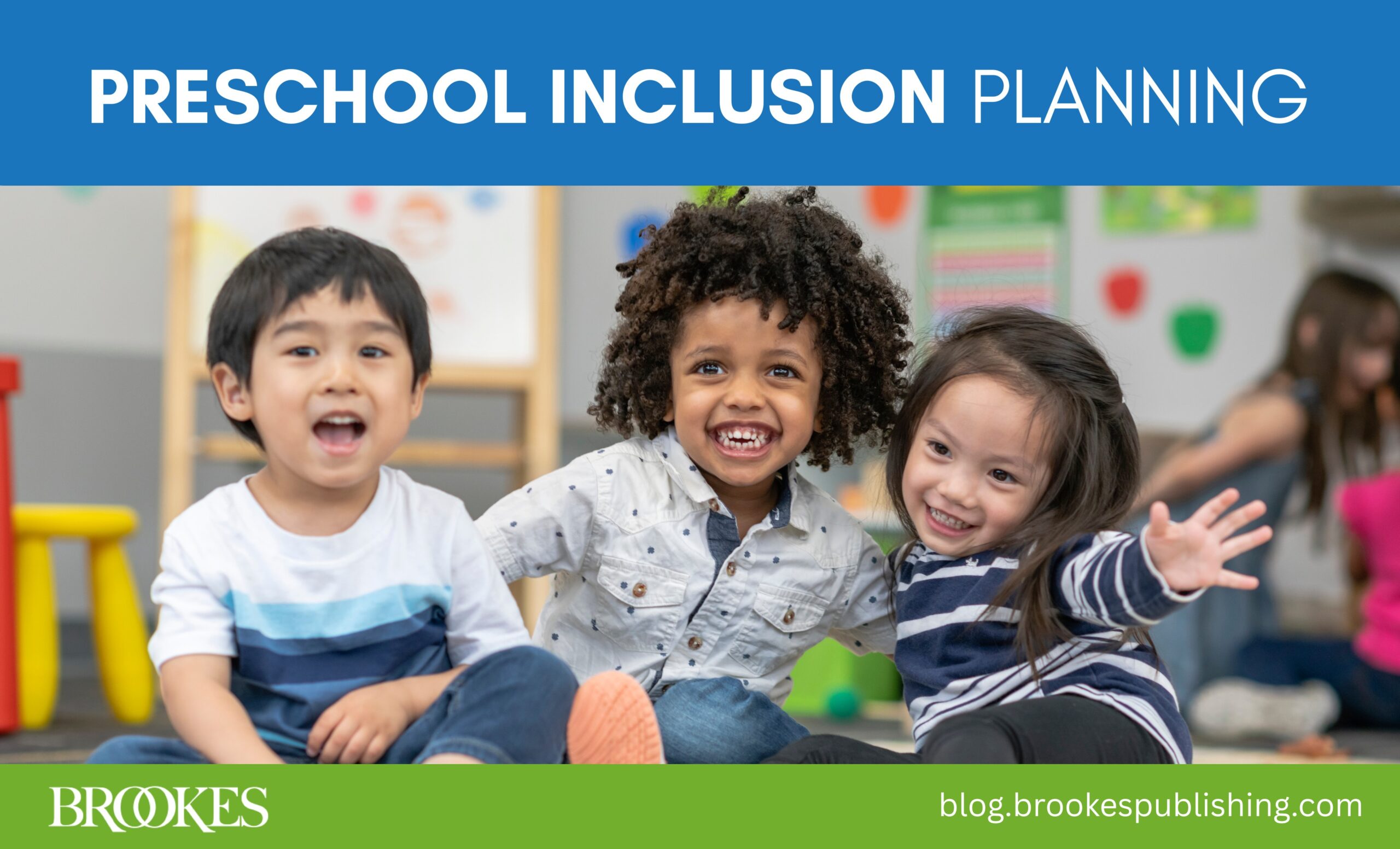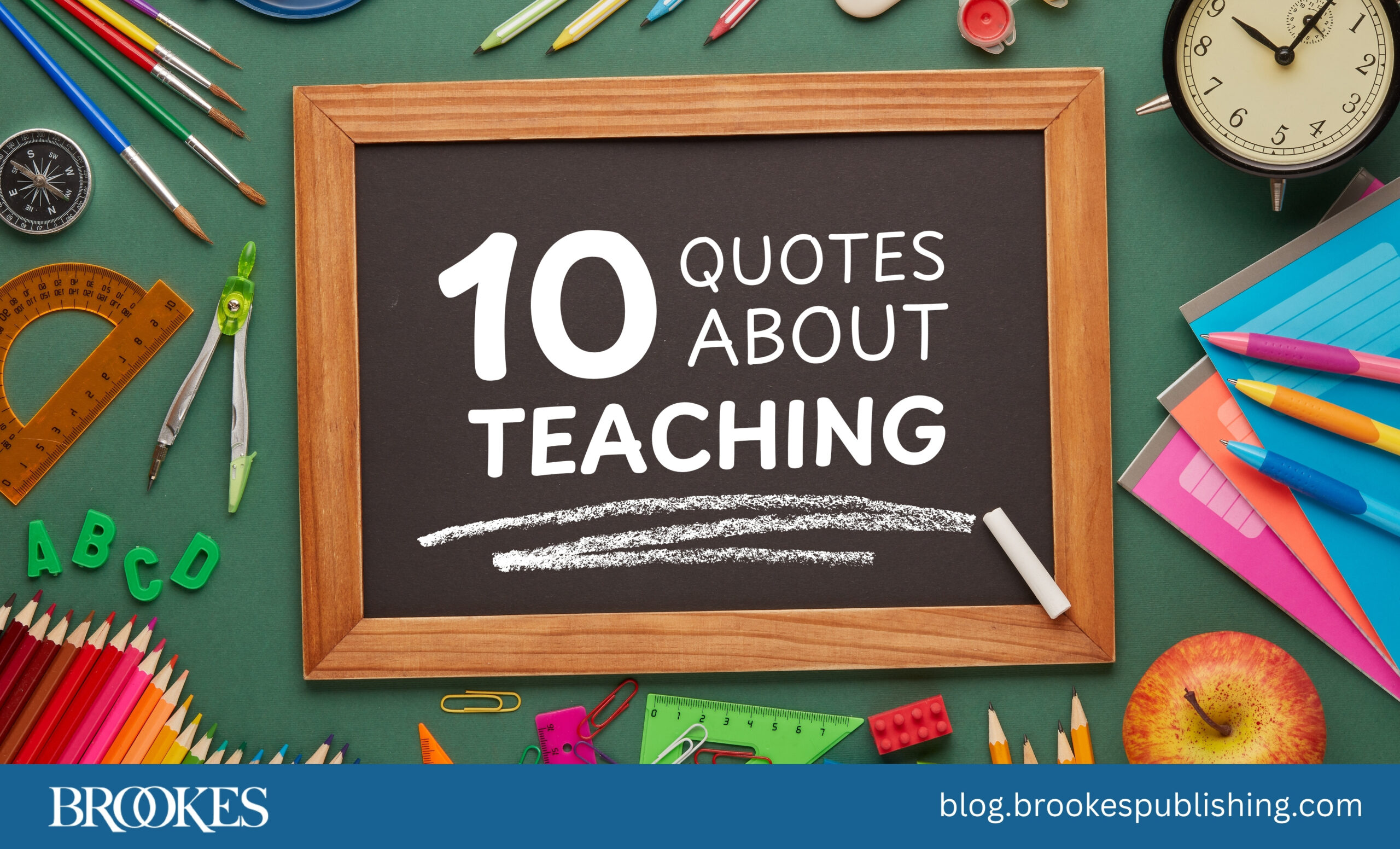UDL, Accommodations, and Peer Supports: How One Teacher Did It
July 5, 2016
Over the past few months, we’ve posted lots of individual articles and success stories on UDL, accommodations, and peer supports. In today’s Inclusion Lab post, we’ll take a look at how all of these elements can work together in an inclusive classroom to help every student succeed. You’ll see how one high school science teacher used a UDL approach to teach his whole class—and how the education team for one of his students added accommodations and supports to meet the needs of Leslie, a learner with significant disabilities.
 (This post was excerpted and lightly adapted from the book More Language Arts, Math, and Science for Students with Severe Disabilities, edited by Diane M. Browder, Ph.D., & Fred Spooner, Ph.D.)
(This post was excerpted and lightly adapted from the book More Language Arts, Math, and Science for Students with Severe Disabilities, edited by Diane M. Browder, Ph.D., & Fred Spooner, Ph.D.)
High school teacher Dan Bisaccio was designing an environmental science unit around New Hampshire’s science process skills (such as generating hypotheses) and content standards (such as describing the impact of environmental changes on local environments). With UDL principles in mind, he set about creating a unit that would engage and challenge every student in his class and offer multiple ways to learn new concepts.
Mr. Bisaccio wanted to avoid the stultifying scenario of previewing a unit by “talking at” students and asking them to read the headings of a book chapter. Instead, he kicked off the unit with a “grabber” activity that would hook the interest of all students: those with some prior knowledge, those with none, those who had a difficult time reading, and those whose attention span was short. The activity had an overarching question: Are the New Hampshire forests healthy?
For the grabber activity, Mr. Bisaccio divided his 30 students into groups of 10 and gave each group a partially decomposed tree branch. First, he asked them to describe the stick. After ten minutes, a spokesperson for each team described the stick’s bark, its size and weight, its smell, and other characteristics. Mr. Bisaccio then asked the students to tell a plausible “story of the stick” using the creative talents and learning styles of all their group members. After about 20 minutes of preparation and rehearsal time, groups acted out narrative stories and skits, read poems, displayed charts and diagrams, and even performed a rap song that depicted their hypotheses. This simple activity set the stage for a unit that engaged all students.
During the rest of the unit on New Hampshire forest health, Mr. Bisaccio presented information in multiple ways, including text and videos. Though he presented a short daily lecture that aligned with the reading or homework, the students took active part in their own learning by doing library research, conducting observations in the nearby woods, listening to a first-hand account from a New Hampshire forester, and engaging in small-group discussions and debates. At the end of the unit, Mr. Bisaccio gave a traditional multiple-choice test in addition to a performance exhibition in which groups presented arguments supporting their answer to the unit’s essential question.
Supports for Leslie
Leslie, a student with significant disabilities, was fully included in Mr. Bisaccio’s class. Her IEP team used a routines-based planning process and format to design support plans for Mr. Bisaccio’s teaching routines. Carefully planned supports would allow Leslie to participate in the same activities as her peers instead of engaging in an alternate activity.
For example, during the teaching routine in which students read from a handout and took notes, students had to decode and comprehend the text, choose important information to write in their notebooks, highlight key words, and ask questions to clarify their understanding. Leslie needed the following individualized supports to participate in all aspects of this routine:
1) Enlarged text—written at a first- or second-grade level—containing key vocabulary and concepts
2) Aided language boards or graphic organizers to enhance her receptive understanding and expressive communication
3) A notetaking template on her laptop
Leslie’s team also used a second planning process to identify her priority learning objectives for each unit. She would focus on the same essential question as the other students: Are the New Hampshire forests healthy? Leslie was expected to master core vocabulary terms such as ecological system, bio-diversity, pollution, and environmentalist. Her learning standards would be similar to those for students without disabilities, but reduced in depth, breadth, and complexity.
Instead of this knowledge standard: “Describe the type of impact certain environmental changes, including deforestation, invasive species, increased erosion, and pollution containing toxic substances, could have on local environments.”
Leslie’s knowledge standard was: “Describe the impact that two ecological threats have on trees and animals in the New Hampshire forest.”
Leslie’s high-priority IEP goals included managing her materials, taking notes on key points in an informational text, asking and answering questions, and fulfilling a meaningful role in group activities.
Leslie benefitted from the UDL principles Mr. Bisaccio used to design his unit, deliver instruction, and assess student learning. Here are some success factors that helped Leslie participate in this science unit alongside her peers:
- Mr. Bisaccio differentiated his questions throughout the unit to target Leslie’s specific learning objectives.
- As students worked in their cooperative groups, Mr. Bisaccio circulated through the classroom and spent a few minutes of each class period with Leslie, providing some extra support or instruction.
- Effective peer supports were put in place. Leslie’s peers were taught how to provide support to her without giving her the answer. She also went to a noncategorical academic support center daily where she was tutored by an upperclass peer.
- The special education teacher came into the classroom several times a week to co-teach a lesson, facilitate Leslie’s small group, provide her with direct instruction, or model for and coach her paraprofessional.
 This short case study shows how a combination of UDL, peer support, and individualized accommodations can work together for the benefit of all students, with and without disabilities. For more guidance, check out More Language Arts, Math, and Science for Students with Severe Disabilities, and explore the practical posts in our Fair Is Not Always Equal…Now What? blog series.
This short case study shows how a combination of UDL, peer support, and individualized accommodations can work together for the benefit of all students, with and without disabilities. For more guidance, check out More Language Arts, Math, and Science for Students with Severe Disabilities, and explore the practical posts in our Fair Is Not Always Equal…Now What? blog series.




Write a Comment
Your email address will not be published. Required fields are marked *
comments
Blas Venhaus says
This article was a great inspiration to me as and aspiring teacher. It taught me that correct accommodations and supports will help a student succeed together with the class, and with her personal IEP goals.
Post a Comment